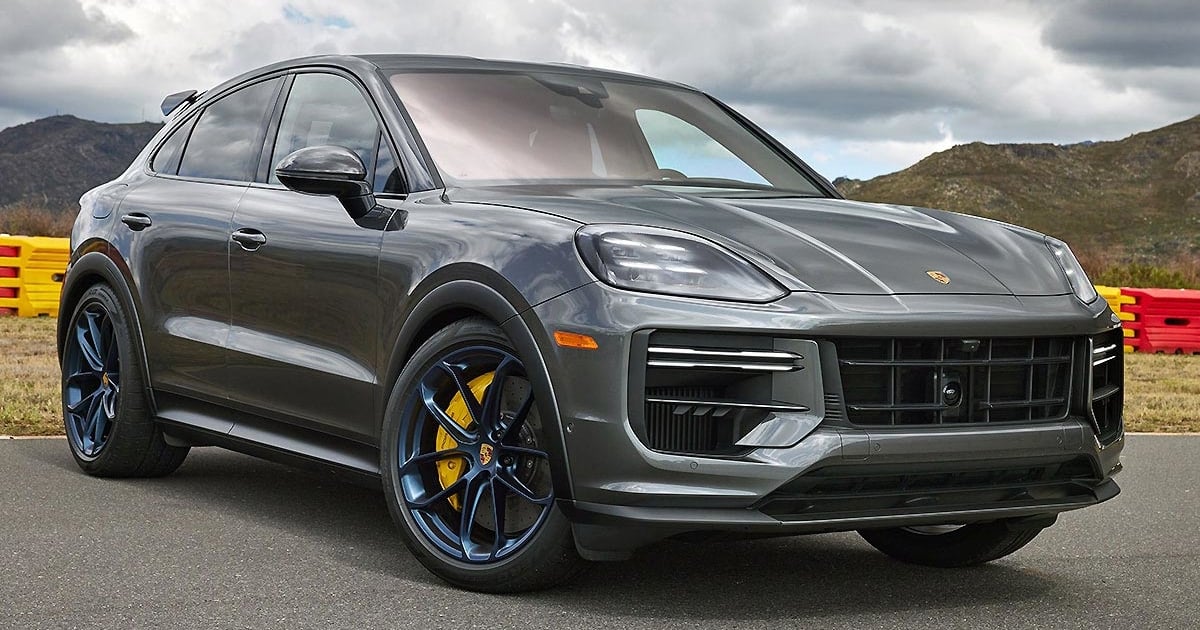
LOS ANGELES — Porsche has put the combustion engine Cayenne on the path to retirement, but first, the automaker is giving the workhorse midsize crossover a midcycle freshening that feels more like a redesign.
To elevate the driving experience, Porsche has dialed up engine output across the Cayenne lineup.
While the industry steers away from thirsty V-8 engines to meet ever-tightening emissions regulations, Porsche is returning the big engine to the Cayenne S for the U.S. after ditching it nearly a decade ago.
The 2024 Cayenne S swaps its V-6 for a V-8 that makes an additional 34 hp and delivers a 0-to-60-mph time of 4.4 seconds. Porsche mechanically adapted the eight-cylinder to make it “at least as fuel-efficient” as the V-6, said Mike DePetro, product manager for Porsche Cars North America.
The V-8 also helps differentiate the S trim from the base Cayenne.
“The V-8 is a very important American need and want in an automobile,” he told Automotive News on the sidelines of a media event here. “We were losing consideration because we didn’t have a V-8.”
But it took some convincing at Porsche headquarters in Stuttgart.
“We’re a global company, and to have an offer for just our market sometimes doesn’t make sense,” DePetro said. “But there was a business case behind it, so we made it happen.”
DePetro expects the S trim to account for about 30 percent of Cayenne sales.
The overhaul brings significant interior, exterior and under-the-hood updates to rekindle interest in Porsche’s No. 2 seller. The changes put the Cayenne interior on par with the 911 and the electric Taycan, DePetro said.
“Nothing was left untouched. Pretty much every body panel, the headlights, wheel, design, brakes have been changed to a degree,” he said.
The third-generation Cayenne is likely the final combustion engine version. Production is expected to end in early 2029, according to AutoForecast Solutions.
Porsche plans to debut an all-electric Cayenne mid-decade. The German sports car maker aims for 80 percent of its global vehicle sales to be fully electric by 2030.
Meanwhile, Porsche wants the freshening to widen the nameplate’s appeal while preparing customers for its electric future. For 2024, the Cayenne will get a digital-first cockpit reflecting the Taycan’s design language.
“We’re merging the traditional analog world with the digital future,” DePetro said.
Porsche has mostly ditched physical buttons in the updated Cayenne, favoring expansive high-definition displays to appeal to the millennial set.
An optional 10.9-inch passenger display that debuted in the Taycan delivers media streaming services. Screen-dimming technology prevents the driver from viewing the passenger screen.
The focus on the passenger is intentional.
“Seventy-three percent of all trips that a Cayenne driver takes has a passenger in the front seat,” DePetro said.
To carry forward the minimalist aesthetic, a multifunction steering wheel, introduced in the latest-generation 911, puts driving mode controls and instrument cluster display settings within easy reach of the driver.
The gear selector is moved to the dashboard, creating an open center console area, drawing similarities to an electric vehicle interior.
The 2024 Cayenne also receives a muscular front design with styled fenders, a raised hood and redesigned headlights. The taillights are updated, and a new rear fascia integrates the license plate holder.
“It’s a more chiseled design — it’s like it went to gym class and got harder,” DePetro said.
The base Cayenne, which starts at $80,850, including shipping, carries a roughly 10 percent premium over the outgoing model. But it also delivers more standard features, including matrix-design LED headlights, active suspension management, 20-inch wheels and safety technology.
The 2024 Cayenne includes more than 10 features as standard equipment that were unavailable or optional on the outgoing model.
“We wanted to appeal to more of the luxury set, and they don’t want to be nickel-and-dimed,” DePetro said. “If we can eliminate some of those choices and make it simpler, customers can focus on the customization and the things that really make the car theirs.”